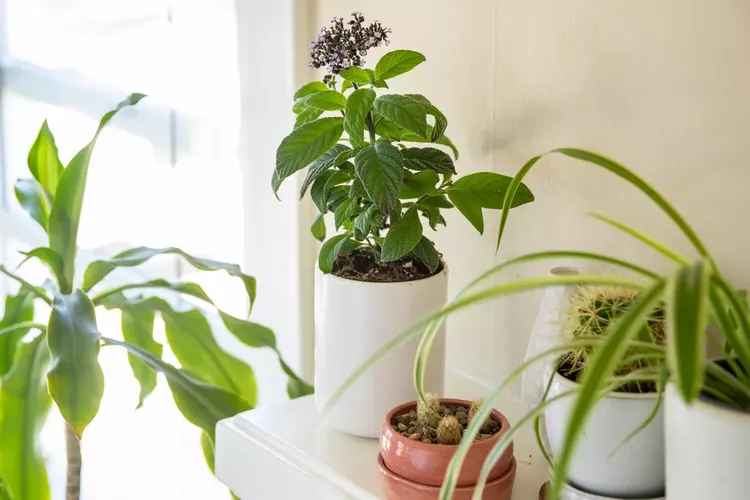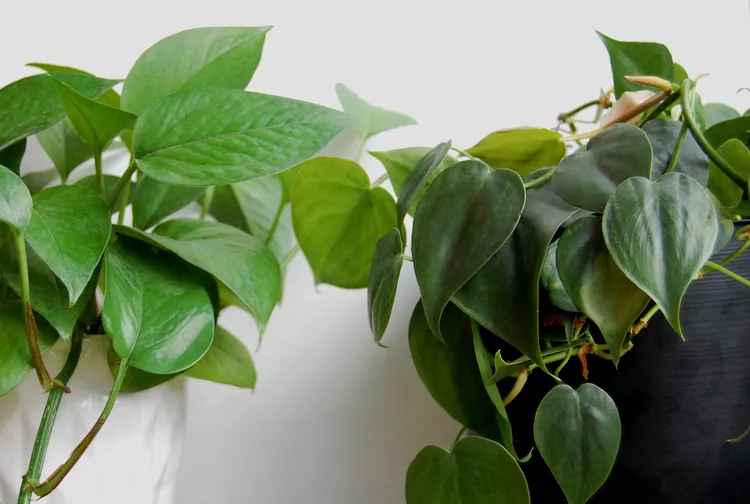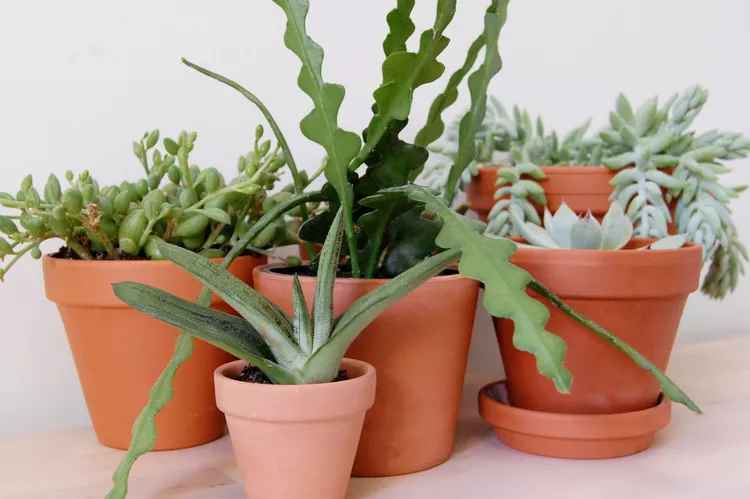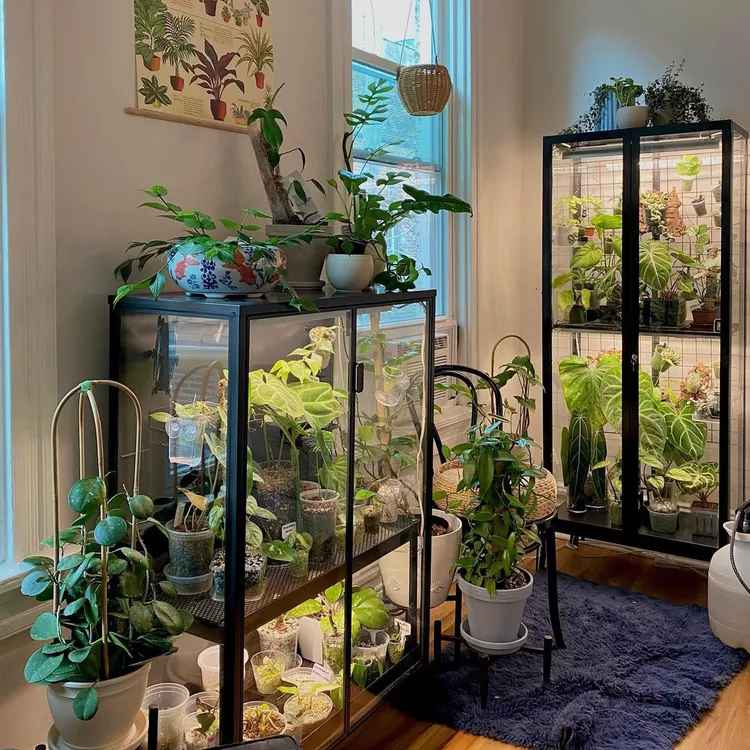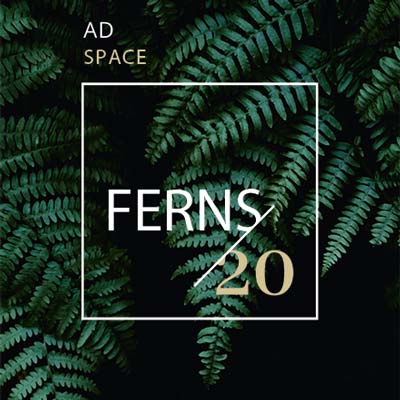Apartment dwellers who are savvy know that not all houseplants will thrive in their apartment. Apartment plants need to be tough enough to survive low lighting and humidity but also have a bold appearance for small spaces where every detail counts. These 11 houseplants will brighten your apartment and purify the air. They also release moisture.
01
Macro shot of green and purple rex Begonia leaves
krblokhin / Getty Images
Rex begonias are a stunning houseplant that will change your mind about what you consider to be a houseplant. The foliage of the rex begonia is a mix of vibrant pinks, moody purples, and smoky-greens. It can sometimes look more like stained-glass windows than actual leaves. The frosting on the cake are leaves with a swollen, hairy or lobed appearance. Rex begonias are tolerant of all conditions: water, light and fertilizer. They’re perfect for apartment life.
02
Orchids in a window
The Spruce by Leticia Almeida
There are exotic orchids everywhere. But what about apartments. The best plant for small apartments might be a colorful one. Orchids are different from other houseplants in that they do not require soil to grow, but rather a chunky mix of orchids that allows air to reach the roots.
The moth orchids prefer temperatures above 60 F. Lowering the thermostat during the night will save you money on your energy bill and help to stimulate blooming. The humidity can be improved by filling a tray with water and gravel. A window facing south or east will also keep the moth orchids vibrant.
03
A philodendron growing in a basket
The Spruce by Margot Cavin
The philodendron, which is inexpensive and readily available, is often the first plant apartment dwellers choose. The large, heart-shaped leaves can be trained to climb a totem for vertical accent. The philodendron will grow for many years with only a weekly watering, and indirect lighting.
04
Spider plant on mantel
The Spruce by Krystal Slagle
A houseplant can serve as a visual memory of something that we used to have in our childhood homes. Spider plants were popular in the 1970s and they can still be used to create a retro feel in your apartment. They don’t require much water and adapt to different light conditions, including artificial light. Hang from a macrame hook to get the vintage look.
05
A jade plant is displayed on a nightstand
The Spruce by Leticia Almeida
Apartment dwellers who are obsessed with succulents can’t go past the classic jade, which is a great houseplant for those interested in other succulent varieties. The semi-woody stems can be trained into a bonsai shape if desired. Give your jade plant a place in your apartment that receives bright light and only water when the soil becomes dry. You can check the health of your jade by looking at its leaves. Grey leaves mean that it is not getting enough sunlight and shriveled ones indicate that there is not enough water. Red-tinted jade leaves are a sign of good health.
06
Fiddle leaf figs in a apartment
The Spruce by Corinne Bryson
Decorating small spaces with small items is a common mistake. In a bright apartment, a large houseplant such as a fiddle-leaf fig will make a statement. This has become the most popular houseplant in recent years. Designers love it, so you can’t help but see it everywhere. They add drama and heft to a bedroom or living room, but require regular maintenance to keep them in top shape. Just enough water to make the soil feel like a sponge. You can give your fiddle-leaf fig a boost in nutrients by using the water from your aquarium to irrigate it each week.
07
Tillandsia air plant
SEE D JAN / Getty Images
Try the air plant instead if a soil-digging cat made you abandon apartment houseplants. Tillandsia is an epiphytic tree that grows in forest trees, using specially adapted leaves to extract moisture from the atmosphere. You can use your soilless air plant as a houseplant in unusual containers such as glass orbs or teacups or even mounted on driftwood. Do not abandon your air plants in the dark corners of your apartment. They still need filtered light, as well as a weekly spritz of water.
08
English Ivy
MIXA/Getty Images
The English ivy can withstand a wide range of conditions: high or low temperatures, moist or dry soils, and varying light levels. Helix hedra with its dark, toothy green leaves looks great in apartments. There are also English ivy varieties with white or yellow variegation or leaves that have been puckered or ruffled.
09
Bird’s nest fern next to a bed
The Spruce by Leticia Almeida
Healthy ferns can be a mood booster in an apartment. However, many ferns require high humidity levels that are hard to maintain indoors. Bird’s nest fern can survive in low-light conditions with average humidity. The leathery leaves on the bird’s fern look beautiful, despite not being typical fern fronds. Bird’s nest fern is an epiphyte and requires a potting mixture that allows air to circulate around the roots.
10
ZZ Plant
Elizabeth Fernandez/Getty Images
Do you like the name ZZ? This peace lily’s relative is also known as the zuzu. The slow-growing plants are native to Africa and thrive under fluorescent lights, which are common in apartment kitchens. ZZ plants can tolerate a variety of moisture levels, but they prefer a dry environment.
11
Christmas cactus
Nadezhda_Nesterova/Getty Images
Christmas cactus is named for its winter flowering period. It differs from the other cactus types in that it doesn’t like full sun, or dry conditions. They are native to rain forests and prefer dappled lighting. The perfect place for a Christmas Cactus is a steamy bathroom that has a natural source of light, or an area around the sink.
